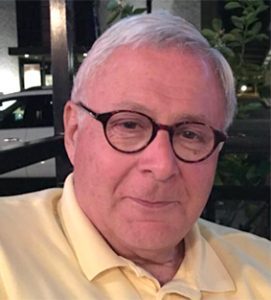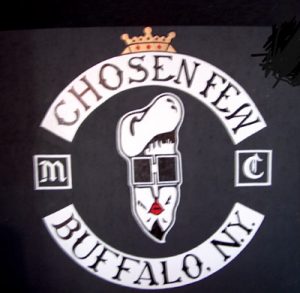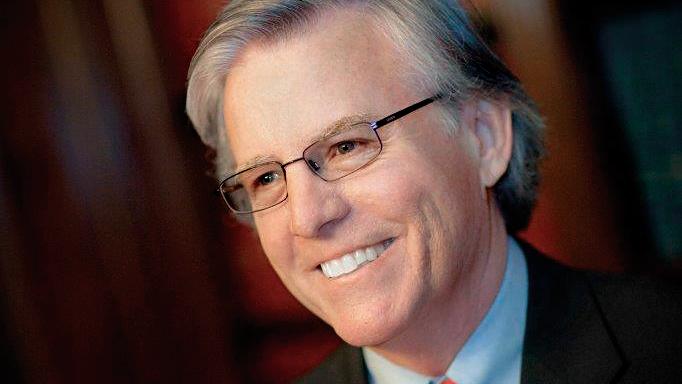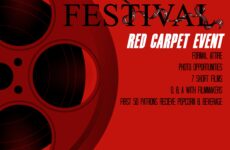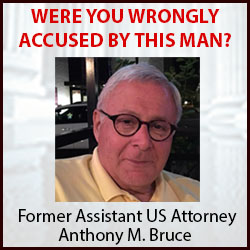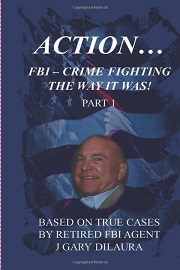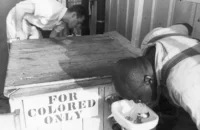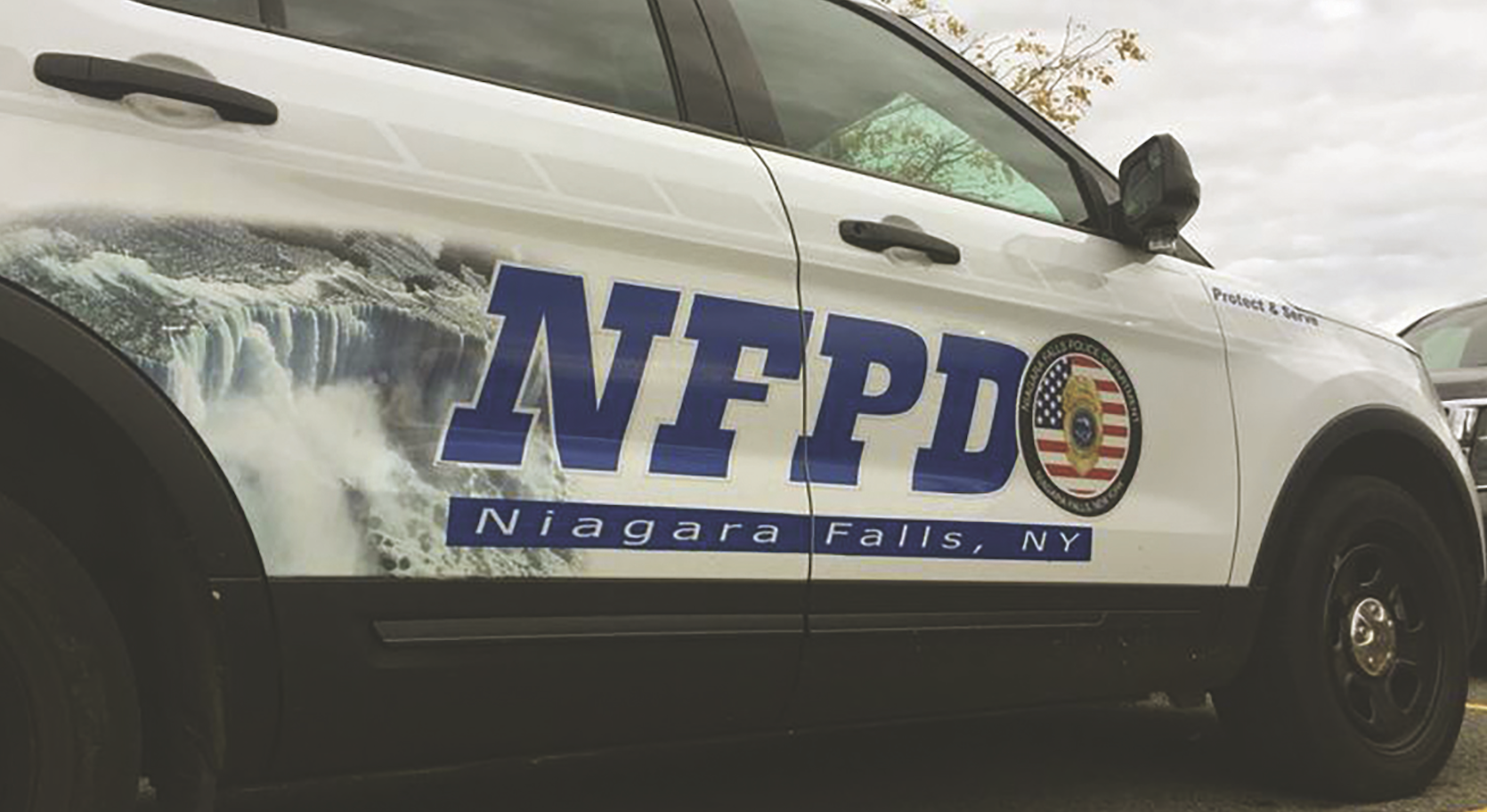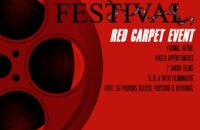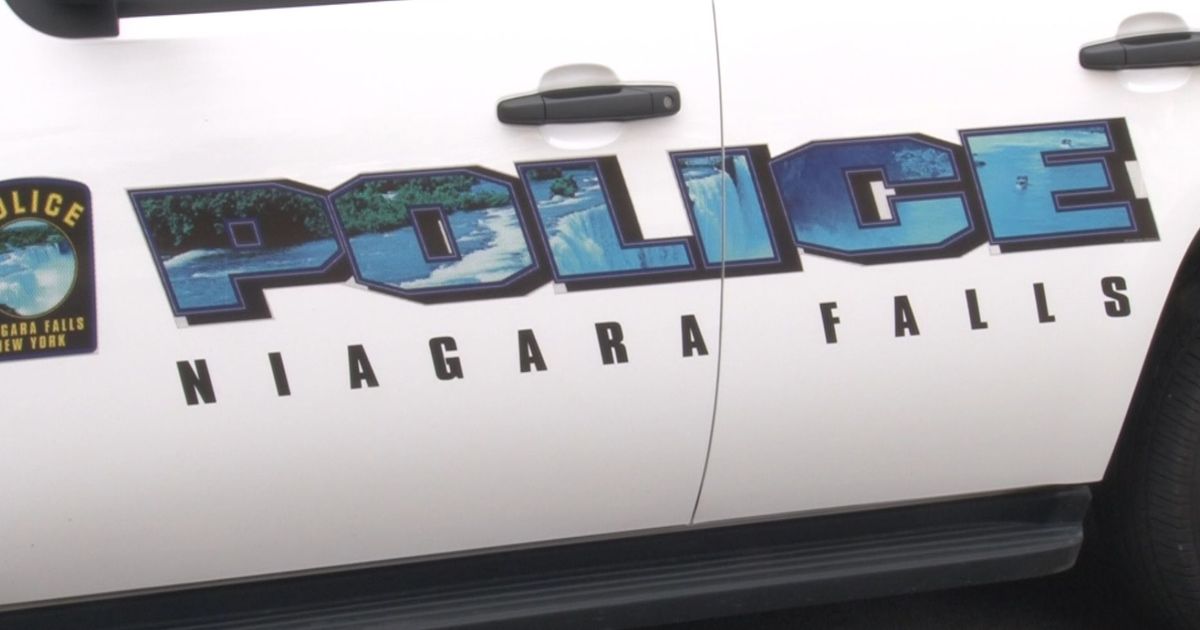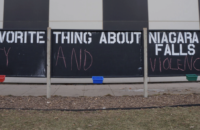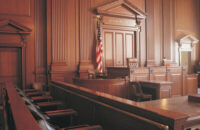Informant Ignasiak, like Bruce, was the true criminal in the case
This week we continue our series on former Assistant US Attorney Anthony M. Bruce, who was with Department of Justice for 38 years before retiring in 2016.
In one of Bruce’s more famous cases, against 20 members of the Chosen Few motorcycle club, he made ample use of a dishonest informant to develop his dishonest and ultimately unsuccessful case.
How it began is a little murky.
From time to time, rival motorcycle clubs try to show they are a little tougher than others, usually with some mischief and where no one was hurt.
In 2004, David Ignasiak, with three members of the Chosen Few club, allegedly threw two firecracker bombs at the clubhouse of the Lonely Ones, another motorcycle club, on Martin Road in Blasdell.
It was mischief, no doubt. Lonely Ones member Theodore C. Sparks was in the clubhouse at the time. He was uninjured, but he got the message: Don’t mess with us.
Bruce Goes After Them
In 2004, Bruce, getting wind of this and other minor mischief, and always on the lookout for people to imprison, is said to have guided FBI agents to file what were later alleged to be false affidavits to get court-authorized listening devices and hidden cameras installed inside the Chosen Few’s clubhouse in Depew.
Over the next few years, the feds watched and listened as club members gathered and drank at their clubhouse, bragged about various exploits and generally had a merry, good time.
There was little evidence of crime.
But Ignasiak, the man who had thrown firecrackers at the Lonely Ones clubhouse, got in trouble and agreed to become an FBI informant in July, 2006, offering to rat on his Chosen Few gang.
Two years passed, but Ignasiak was unable to provide any helpful information. Likely fearful of Bruce indicting him, and perhaps advised by Bruce on how to manufacture some crimes to inform on, Ignasiak went to work.
He lived a few hundred yards from Como Park in Lancaster, and he went there after hours. It was alleged that he vandalized his club’s tents, which happened to be there for a “Bikes and Blues” gathering.
Ignasiak, it was alleged, made it look like it was done by the Kingsmen, another motorcycle club, since the knife used to “slice up” the tents was also used to put the initials of the Kingsmen Motorcycle Club on some of the tents.
The Kingsmen denied vandalizing the tents, but Ignasiak was one of the men who persuaded other Chosen Few members that the Kingsmen were lying and a feud between the Kingsmen and the Chosen Few began.
With the aid of secret recording devices and hidden cameras, a crime might be committed, maybe even a murder, or at least conspiracy. Proof should be at hand.
If Bruce didn’t think the whole thing up, one imagines he at least was happy about the good conduct of his pupil, the informant, David Ignasiak.
And while there had been no hostilities between the Kingsmen and Chosen Few for a decade, there was now. Chosen Few president Alex Koschtschuk was pissed about the tents.
He was the president; he had to look tough – these were bikers no less. And, as the Feds secretly recorded, Koschtschuk said, “We’re not going to play games with these guys . . . We’re taking them down . . . Baseball bats, whatever you want, however you want.”
Overall, this was tough talk, but Koschtschuk, 58, with gray beard and gray hair slicked back into a pony tail, worked for the Thruway Authority. He wasn’t looking for trouble. Time passed and nothing happened.
And you can bet Anthony Bruce wasn’t happy about that.
Then one night shortly after, when everyone had gone home and the Chosen Few clubhouse was empty, someone fired a shotgun at the building, striking a wire that powered surveillance cameras.
Ignasiak was certain the Kingsmen were behind it. Yet, to the logical mind, the location of the wiring was known only to members of the Chosen Few. Ignasiak was a member. Nobody suspected the informant could be trying to conjure up crimes for his man Anthony Bruce.
Could it have happened?
A few days later, Ignasiak, wearing a wire, encouraged three Chosen Few members to take a ride with him to where a Kingsmen, Eugene Siminski, a man Ignaisak was certain was involved in the attacks. would be on his motorcycle. Chosen Few members Bradley Beutler, Paul Roorda and Martin Whiteford went with Ignasiak. When Siminski was stopped at a red light, they got out and hit him with the handle of an ax, but not too hard.
The next day, a jubilant Ignasiak delivered to the Feds a recording of the assault on Siminski. From the recording it was clear that Ignasiak gave directions to Roorda to maneuver his vehicle close to Siminski so that they could get out and hit Siminski.
Ignasiak is heard saying, “Hurry up! — get behind him — pull up — ready, let’s go!”
But when Bruce presented the crime to the grand jury, he avoided letting the grand jury know that Ignasiak planned and led the attack.
In the Grand Jury, on April 28, 2009, Bruce examined FBI Special Agent Jensen on the axe handle assault of Kingsmen Siminski.
Bruce: My understanding, Mr. Ignasiak was along for the ride but did not participate in the incident?
FBI SA: Yes, in a manner of speaking.
Bruce knew Ignasiak led the attack. He deliberately elicited false testimony before the grand jury.
Bruce Indicts
In May, 2009, Bruce indicted 20 members of the Chosen Few motorcycle club, including its president Alex Koschtschuk, charging them with federal racketeering in connection to the feuds with the Kingsmen and the Lonely Ones. Koschtschuk was held without bail.
Friends, wives and families of the indicted men were mortified. They tried to reason with Bruce. These were not gang members but middle-aged white guys with families and jobs, hardworking family men who loved motorcycles who never hurt anyone.
There were no dead bodies. There were no drugs. No stash of cash. It was mischief and tough talk.
Sure, some of the men — in their 40’s and 50’s – had scruffy beards, tattoos and long pony tails. And they were tough, or thought they were. But as far as committing bombings, arsons, assaults and murders, it just didn’t happen.
But Bruce laid it out, “Death threats, beatings, guns and explosives against the Kingsmen,”
Indicted were: Alan Segool, 48, of West Falls; James Lathrop, 56, of Alden; Bradley Beutler, 36, of Depew; Clyde Utz, 50, of Alden; Brion Murphy, 52, of Attica; Gerald Rogacki, 47, of Alden; Matthew Watkins, 33, of Elmira Heights; Dennis Rogowski, 43, of Cheektowaga; Norman Herzog, 43, of Lackawanna; Lionel Carter, 53, of Belmont; Gary Phillians, 44, of Angola; Paul Roorda, 48, of Buffalo; Robert Treadway, 41, of Depew; Martin Whiteford, 37, of West Seneca; Charles Kuznicki, 38, of East Aurora; Robert Geiger, 42, of Medina; Donald Diana, 47, of Depew; and Robert Summerville, 46, of East Aurora.
Bruce began with a 10-page indictment in March, 2009. The indictment was superseded by 30 pages of accusations two weeks later. Then an indictment superseded that one in May, 57 pages long. And that second superseding indictment was superseded by another 76 pages of accusations.
And five years after the deed, just in time to beat the statute of limitations, Bruce handed down indictments charging Koschtschuk with building “pipe bombs” in 2004 and six club members with setting off the bombs to test them and three members with being at the scene when bombs were thrown at the Lonely Ones clubhouse.
He escalated the charges for those present on the day the firecrackers were hurled – he called them Molotov Cocktails – at the Lonely Ones clubhouse, alleging attempted murder since Sparks was in the clubhouse, although uninjured.
But Bruce did not charge his informant Ignaisiak, who likely threw the pipe bombs.
Relying on his informant, Bruce claimed members tried to shotgun David Carine twice, both times failing. And shot a Kingsmen named William Slater in May, 2005, but he didn’t die. Bruce alleged they conspired to shoot Ignasiak, trying to run him over with a pickup truck, both times failing. From beating a man named Jason Stucke with baseball bats to threatening to murder a Kingsmen named David A. Koch, no one got killed and none of it was ever proven.
The Case Falls Apart
With top defense lawyers in the area retained or assigned to the defendants, the case started to unravel.
A hearing in connection with the defense’s claim of “outrageous government conduct” was held in the spring of 2011.
Based upon evidence developed during the hearing, defendant Martin Whiteford sought disclosure of portions of the grand jury proceedings. Bruce opposed the motion.
Oral argument was held and the motion was granted.
Bruce was accused of lying in the grand jury.
Magistrate Judge Jeremiah McCarthy wrote in his decision. “While I am reluctant to conclude that …an Assistant U.S. Attorney may have knowingly elicited [false] testimony, the evidence submitted to me thus far is troubling, to say the least.”
It came out under questioning by Bruce at the hearing that FBI SA Jensen admitted Ignasiak was one of the attackers of Siminksi.
But Bruce, trying to defend his misleading of the grand jury, questioned Jensen in such a manner as to obfuscate the fact that in the grand jury he tried to pretend that Ignasiak was “just along for the ride” and not an active participant in the beating of Siminski.
At oral argument, AUSA Bruce stated “Well, participated, attacked, to me it is the same thing”.
Judge McCarthy wrote, “Given that admission, I can see no innocent explanation for how he could have suggested to the grand jury on April 28, 2009 that Ignasiak was merely ‘along for the ride’ and did not participate in the August 20, 2008 assault on Eugene Siminski… Ignasiak clearly ‘participated’ in the incident at a level sufficient to render him ‘punishable as a principal’ as an aider and abettor of the assault.”
Bruce pushed back, arguing “the decision of what to indict and who to indict and all of those various things are decisions that are left exclusively to the executive branch of the government (i.e him). . . [The grand jury] can ask questions, they can suggest things — quite frankly, that does not usually happen but that is the way it goes.”
Judge McCarthy disagreed, “As contemplated by the Fifth Amendment, it is the grand jury — not the government — which calls the shots…. (T)he fact remains that AUSA Bruce’s question to SA Jensen mentioned his ‘understanding’ that Ignasiak was not involved…
“But for AUSA Bruce’s question and SA Jensen’s answer, the grand jury might well have decided that Ignasiak himself should be indicted for his role in the August 20, 2008 assault… Thus, but for the government’s decision not to prosecute him, there is no apparent reason why Ignasiak was not indicted for his participation in the August 20, 2008 assault. If he had been, this might be a much different case…”
Proven a liar in one thing, one might assume Bruce was a liar in all.
Judge McCarthy chose to review the grand jury minutes.
More information leaked out and it became clear to the defense that Ignasiak committed the vandalism that ignited hostilities between the Chosen Few and the Kingsmen.
“We believe David Ignasiak started a war between the Chosen Few and the Kingsmen because he wanted to make himself more valuable to the FBI as an informant,” Angelo Musitano, who represented one of the defendants, told the judge. “In 20 years of practicing law, I’ve never seen this kind of misuse of an informant.”
Bruce said Musitano’s claims were “baseless”.
Ignasiak Reveals Himself as Not Only a Stoolie but a Bad Liar as Well
A critical moment came when U.S. Magistrate Judge McCarthy refused to revoke the bail of James Lathrop, Jr., an indicted Chosen Few biker who Ignasiak accused of stalking and making threats against him.
The judge found Ignasiak “not credible” and at this hearing it was clearly revealed that Ignasiak, Bruce’s star witness, was untruthful, unreliable and unbelievable.
Some days after the hearing, Ignasiak told the Buffalo News that, going forward, he was not going to lie anymore to the judge.
Unraveling like so many Bruce Cases
With allegations that Bruce likely provided misleading information to the judge who authorized listening devices inside the Chosen Few clubhouse, a sharply worded ruling where Magistrate Judge McCarthy said the U.S. Attorney’s Office played “Russian roulette” with a court-imposed deadline, and Bruce made a “conscious decision to disobey my order as written, and roll the dice”; with the FBI trying to distance themselves from Ignasiak, calling him a “loose cannon”; and the presentations and motion papers of the lead defense lawyers, Paul Cambria, Herbert Greenman, Joseph LaTona and Angelo Musitano tearing the case apart, it was looking bad for the DOJ.
Only Bruce held on, claiming he had plenty of evidence that the Chosen Few were involved in criminal activities, including fire-bombings, assaults and death threats aimed at rival gangs.
Case Dismissed
But all was for naught. The U.S. Attorney’s Office overruled Bruce and dropped the indictment against the Chosen Few motorcycle gang. Bruce’s racketeering case against the Depew-based biker club had unraveled.
“In light of information that recently came to light,” as U.S. Attorney William J. Hochul Jr. put it (a euphemism that Bruce had suborned perjury, and may have done worse, fabricated and conspired to commit and induce crimes), Chief U.S. District Judge William M. Skretny granted the government’s application to dismiss the case.
When asked about how Bruce had blown a case he was so certain was a slam dunk, Hochul declined to elaborate.
While defense attorneys speculated the new information was more damaging evidence against Ignasiak, let it be known that this DOJ is not one to ever concern themselves with justice.
If they could convict an innocent they would do so.
The problem here is that the evidence was overwhelming.
As an example of the supreme dishonesty of the US Attorneys office in this district, even knowing that they were going to dismiss the cases against all 20 members, one of the Assistant US Attorneys tried to bluff the defense attorneys by offering misdemeanors to the defendants, men they knew were innocent.
That Bruce’s case of alleged criminal activity by the Chosen Few hinged on a lying informant and the case was thrown out because of “outrageous government conduct” bothered no one.
Had it not been for a good defense team and an honest Magistrate, Bruce and company would have been tickled to railroad innocent men into prison.
Meanwhile, Koschtschuk and Beutler had been jailed ever since the roundup three years before.
Twenty defendants had years taken out of their lives.
There were no dead bodies. There was no drug dealing. A bunch of middle-aged white guys talking tough, a bunch of immature stuff – some mischief by grown men.
Koschtschuk and Beutler were released from jail.
Bruce went on as if nothing happened, ready to go after other innocent men and women. With his wild eye and giddy demeanor, he might have been secretly pleased that while he did not get a single conviction, since he’d had a riot ruining the lives of dozens of men and, at the base of it with his cohort David Ignasiak, almost did a rare and perfect feat that only a man of his talent could even attempt – convict not one, but 20 innocent men – by creating some crimes, fabricating others, lying about some, and putting together a masterful concoction of a crime organization that did not exist in reality.
Who else could do that?

